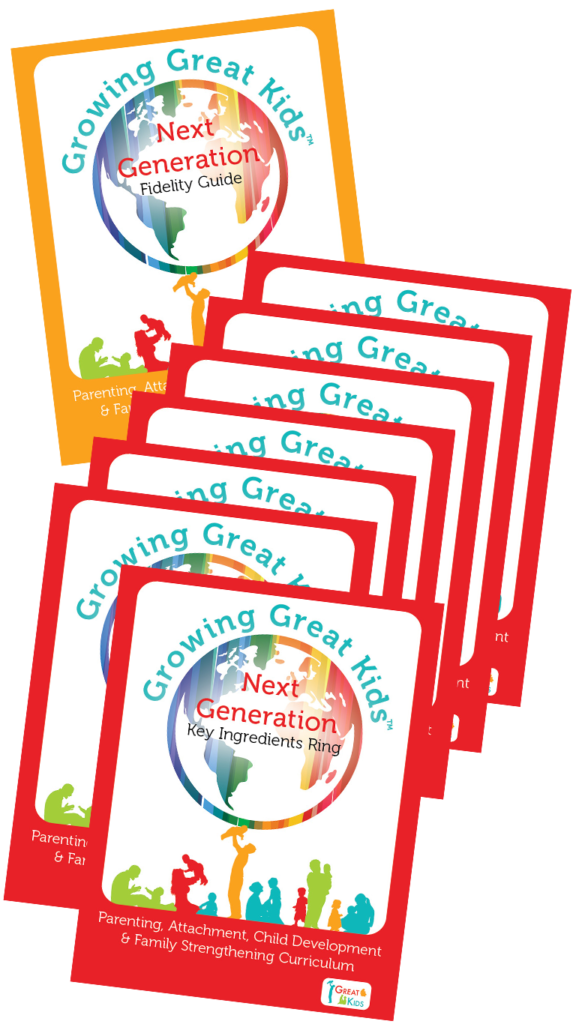Often at the beginning of the GGK training week, we find participants feeling uncomfortable with the concept of the conversation guide. At a recent training, one home visitor mentioned that visiting with a family using a conversation guide seemed more formal than her normal interactions. GGK trainer, Zoe Lemme, uses the analogy of dating. “When you first start dating, the interactions feel formal…You don’t have inside jokes or a level of comfort, but with time a relationship develops and you feel comfortable. Likewise, once you develop a relationship with the GGK conversation guides, your comfort level grows and the formality disappears.” So let’s spend some time this week, thinking about how to use GGK modules to guide your conversations with families.
You will recall that each conversation guide has been very intentionally embedded with Strength-Based language and communication tools, layered to encourage critical thinking, while motivating and inspiring growth. They are intended to be personalized and used interactively. Using a conversation guide is both an art and a skill. With practice, feedback, and reflection it will become easier to use them emergently and tailor them to the circumstances and responses of each family.
When you either read or paraphrase information or ask a question that is embedded in the conversation guide, it is important to listen to what the parent has to say and respond accordingly.
Here are a few ideas for personalizing a conversation guide and tailoring it to each family’s circumstances. “Special Ingredients” you might add might include:
- Use of one of the GGK Action Tools (e. g. ATP’s, Problem Talk, Normalizing, Explore & Wonder)
- Exploring the bulleted items in an in depth manner…”Diving Deep” like a sea turtle
- Touching back on a GGF or GGK Replay (e.g. What I’d Like for My Child, Our Family Values)
- Mentioning to the parent that maybe you will just briefly touch on a portion of the Module, because you have already discussed that information or maybe you have seen the parent putting that skill into practice
- Looking at the Table of Contents with the parent to find ideas about where they would like to go during future visits
- Starting with or transitioning to “Getting in Sync,” “Ready for Play,” or a Child Development Activity (This works especially well with teen parents)
Just a few additional points to remember as you prepare to use the conversation guide during your next visit:
- Be sure to read through the module ahead of time.
- Think about 2-3 learning objectives you will be most focused on.
- Consider how you will encourage the parent to think critically and creatively.
- Where might you include additional Solution-Focused/Problem Talk questions based on what you know about family members?
- How will you foster the growth of secure attachment relationships?
- How will you create joyful parent-child interactions?
- Place a sticky note in your guide to remind you where you might want to pause and go more in depth with this family.
- Where in the module will you touch back on the family’s values, interests, cultural practices, and traditions?
Don’t forget that there are reminders and suggestions for Accentuating the parent’s Positives. When using those prompts, be sure to make them your own.

